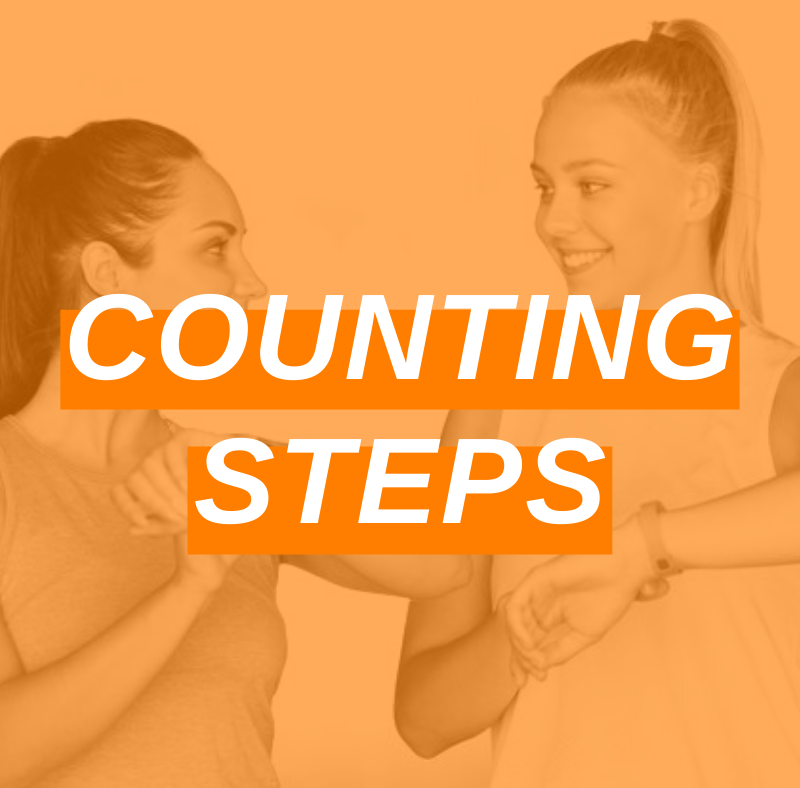
Is counting steps really worth it? Should your clients be counting steps and should we be encouraging them to do so?
There are lots of benefits, many ways to keep up with steps and almost no reason not to do it. That is unless an injury hinders someone from actively walking.
Recommendations for optimal health ask adults to aim for a goal of 10,000 steps a day. However, depending on your occupation, how fast you move, or how much additional activity you get in the course of a week (which should be up between 150 and 300 minutes of moderate intensity a week) to, 4,000 a day might be enough for some. Most of us should be aiming higher.
Benefits of Counting Steps
The benefits of counting steps are many. One of the biggest benefits is that you change sedentary behavior into a more active lifestyle. Hopefully, it sticks.
Even people who are already physically active and fit will benefit from counting steps.
Another huge perk is that tracking can be a motivator. I have known people, myself included, who have gotten out of bed at night just before falling asleep to get their steps counted for the day. Goals!
Gyms and trainers can create competitions to encourage members/clients to reach or exceed goals. It’s another way to help them stay motivated. The trackers can be especially helpful as the fitness world continues to deal with the pandemic and its challenges. “With 2020 being a year we will never forget, gyms and trainers have had to adapt the way we connect with our clients. Challenges give trainers opportunities to connect with their clients, even when we are not physically present to hold them accountable to their goals,” said Mark Baeuerle, a certified trainer and fitness experience director. “Step challenges and close your ring challenges on your Apple watch are easy to follow up with even if members are not comfortable stepping foot into a gym yet. These challenges allow us to meet clients where their comfort level is, especially during Covid-19 times.”
Getting Steps In
By paying attention to steps, clients can see what activities allow them to get more steps in. Creating this awareness carries over long after the ritual of counting steps has stopped. Examples of daily activities that help add steps include:
• Instead of stopping in the car to get mail at the mailbox, walking from the house to the mailbox.
• Parking at the back of the lot instead of looking for the closest parking space.
• Stairs in a home will add up as you/your client use them. When the opportunity arises, take the stairs whenever possible at home and away.
• Take the long way around on foot.
Mae Simmons is a senior group instructor and a yoga teacher. “For me counting my steps everyday helps to keep me motivated and challenged to live a more healthy life,” she said. “Walking at least 30 minutes or more everyday enhances your cardiovascular fitness, strengthens your bones, reduces your body fat and reduces your stress level. I encourage others to set a daily step goal.”
Learn what exercises help add steps. Depending on stride, 10,000 steps equate to somewhere between four and five miles.
• A long neighborhood walk or a run might be all it takes to hit that number.
• Most cardio equipment will add steps at the gym. This includes the treadmill, stair climber, elliptical and lateral. I tested the Ski Erg and it works too as long as you include a squat as you pull the cords downward. Climbing Jacobs Ladder also added lots of steps.
• Even squats and lunges will usually get the ticker counted.
• Jumping adds steps: jumping jacks, low impact jjs, jumping rope and box jumps.
• Hill sprints speed up those steps for sure.
Trackers
Many fitness trackers are available to help with counting steps. Some are easier to use than others and prices vary. Many offer additional features like monitoring heart rate, counting calories and reminders to get moving after sitting for a while.
• Pedometer (perhaps the first step tracker)
• Smart phones with fitness/health apps
• Fitness wrist bands and watches
Clients may stick with tracking long-term. Some might use the trackers for a short time to modify behavior and develop better exercise habits. Tracking steps is a measurable way to reach goals and see success. It’s a super-easy way to keep up with activity and to encourage movement. Do me mindful of the propensity of some with unhealthy body image or addictive tendencies to develop “obsessive” tracking known as techorexia. Just be on the lookout for some of the signs of reliance on their tracker, remind your clients that tracking is a tool, and not a justification for carrying excess guilt for unmet goals.
Reference:
https://www.verywellfit.com/how-many-walking-steps-are-in-a-mile-3435916






